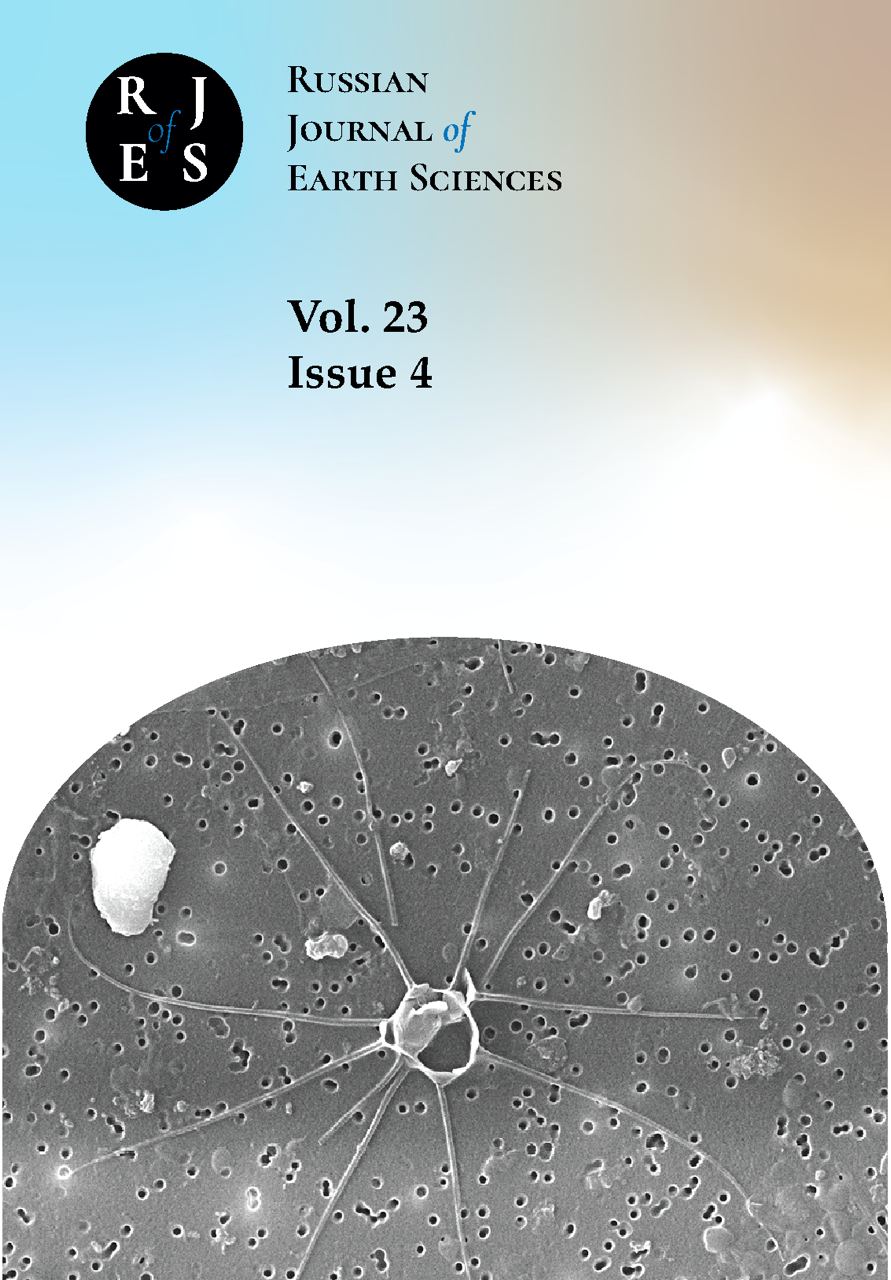Moscow, Russian Federation
UDC 537.84
CSCSTI 37.01
CSCSTI 37.15
CSCSTI 37.25
CSCSTI 37.31
CSCSTI 38.01
BISAC SCI SCIENCE
We consider Bloch eigenmodes of three linear stability problems: the kinematic dynamo problem, the hydrodynamic and MHD stability problem for steady space-periodic flows and MHD states comprised of randomly generated Fourier coefficients and having energy spectra of three types: exponentially decaying, Kolmogorov with a cut off, or involving a small number of harmonics (“big eddies”). A Bloch mode is a product of a field of the same periodicity as the perturbed state and a planar harmonic wave, exp(iq · x). Such a mode is characterized by the ratio of spatial scales which, for simplicity, we identify with the length |q| < 1 of the Bloch wave vector q. Computations have revealed that the Bloch modes, whose growth rates are maximum over q, feature the scale ratio that decreases on increasing the nondimensionalized molecular diffusivity and/or viscosity from 0.03 to 0.3, and the scale separation is high (i.e., |q| is small) only for large molecular diffusivities. Largely this conclusion holds for all the three stability problems and all the three energy spectra types under consideration. Thus, in a natural MHD system not affected by strong diffusion, a given scale range gives rise to perturbations involving only moderately larger spatial scales (i.e., |q| only moderately small), and the MHD evolution consists of a cascade of processes, each generating a slightly larger spatial scale; flows or magnetic fields characterized by a high scale separation are not produced. This cascade is unlikely to be amenable to a linear description. Consequently, our results question the allegedly high role of the α-effect and eddy diffusivity that are based on spatial scale separation, as the primary instability or magnetic field generating mechanisms in astrophysical applications. The Braginskii magnetic α-effect in a weakly non-axisymmetric flow, often used for explanation of the solar and geodynamo, is advantageous not being upset by a similar deficiency.
Magnetohydrodynamic stability, hydrodynamic stability, kinematic dynamo, alpha-effect, eddy diffusivity
1. Braginsky, S. I. (1964a), Self-excitation of a magnetic field during the motion of a highly conducting fluid, Soviet Physics JETP, 20, 726-735 (in Russian).
2. Braginsky, S. I. (1964b), Theory of the hydromagnetic dynamo, Soviet Physics JETP, 20, 1462-1471 (in Russian). Chertovskih, R., and V. Zheligovsky (2023), Linear perturbations of the Bloch type of space-periodic magnetohy-drodynamic steady states. I. Mathematical preliminaries, Russian Journal of Earth Sciences, 23, ES3001, https://doi.org/10.2205/2023ES000834.
3. Frisch, U. (1995), Turbulence: The legacy of A. N. Kolmogorov, Cambridge University Press, https://doi.org/10.1017/CBO9781139170666.
4. Krause, F., and K.-H. Radler (1980), Mean-Field Magnetohydrodynamics and Dynamo Theory, Elsevier, https://doi.org/10.1016/c2013-0-03269-0.
5. Landau, L. D., and E. M. Lifshitz (1987), Fluid Mechanics. Volume 6 of Course of Theoretical Physics, 2nd ed., Pergamon Press.
6. Rasskazov, A., R. Chertovskih, and V. Zheligovsky (2018), Magnetic field generation by pointwise zero-helicity three- dimensional steady flow of an incompressible electrically conducting fluid, Physical Review E, 97(4), 043,201, https://doi.org/10.1103/PhysRevE.97.043201.
7. Starchenko, S. V. (2017), Energy geodynamo parameters compatible with analytical, numerical, paleomagnetic models and observations, Izvestiya, Physics of the Solid Earth, 53(6), 908-921, https://doi.org/10.1134/S1069351317050135. EDN: https://elibrary.ru/XNISXW
8. Steenbeck, M., I. M. Kirko, A. Gailitis, A. P. Klyavinya, F. Krause, I. Y. Laumanis, and O. A. Lielausis (1968), Experimental observation of the electromotive force alongside of an external magnetic field induced by the flow of liquid metal (alpha effect), Doklady Akademii nauk SSSR, 180(2), 326-329 (in Russian).
9. Vainshtein, S. I., and F. Cattaneo (1992), Nonlinear restrictions on dynamo action, The Astrophysical Journal, 393, 165-171, https://doi.org/10.1086/171494. EDN: https://elibrary.ru/XRLZSS
10. Zheligovsky, V. (2011), Large-Scale Perturbations of Magnetohydrodynamic Regimes: Linear and Weakly Nonlinear Stability Theory, Springer Berlin Heidelberg, https://doi.org/10.1007/978-3-642-18170-2.
11. Zheligovsky, V. A. (1993), Numerical solution of the kinematic dynamo problem for Beltrami flows in a sphere, Journal of Scientific Computing, 8(1), 41-68, https://doi.org/10.1007/BF01060831. EDN: https://elibrary.ru/XPSZPP
12. Zheligovsky, V. A., and R. A. Chertovskih (2020), On Kinematic Generation of the Magnetic Modes of Bloch Type, Izvestiya, Physics of the Solid Earth, 56(1), 103-116, https://doi.org/10.1134/S1069351320010152. EDN: https://elibrary.ru/TWZXOG

















